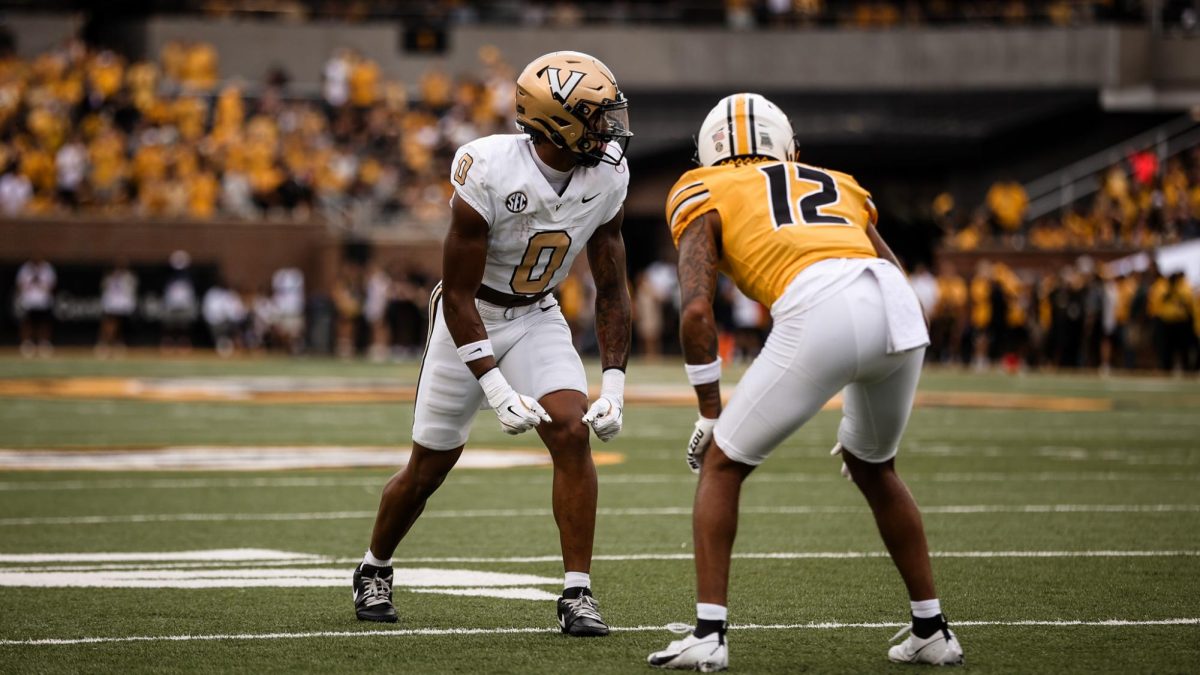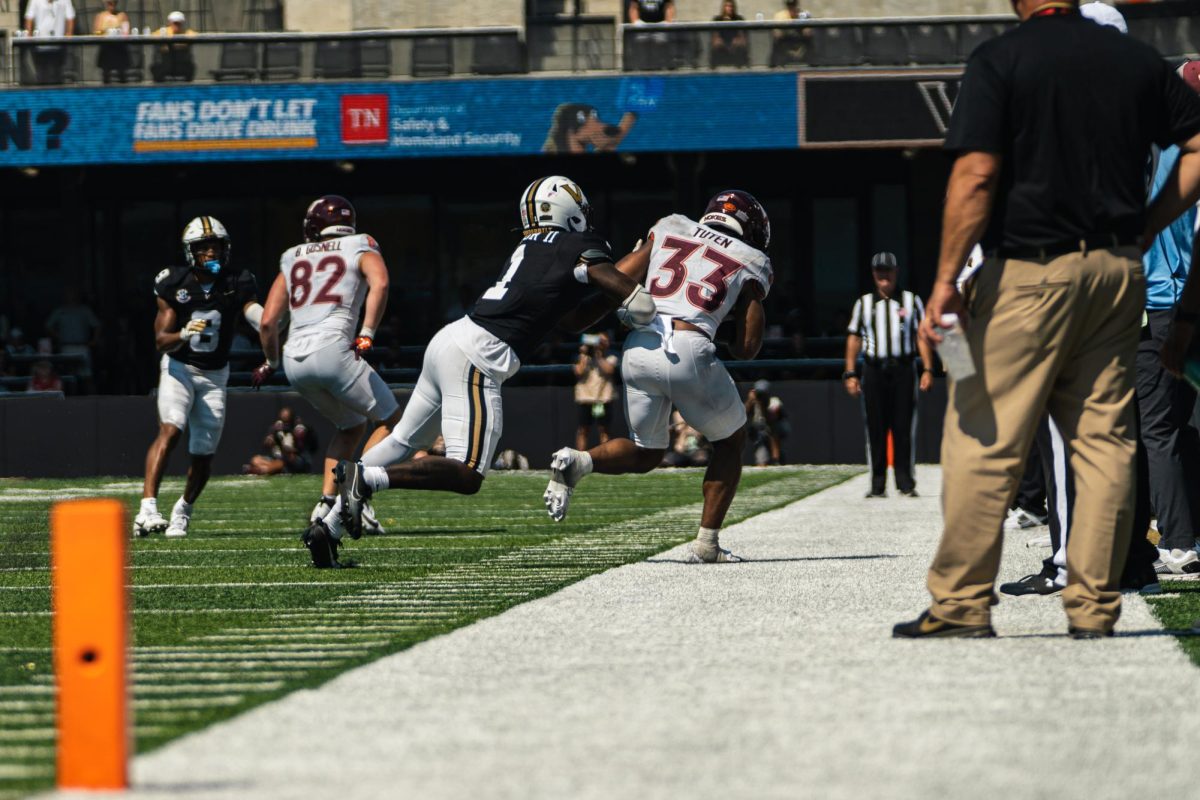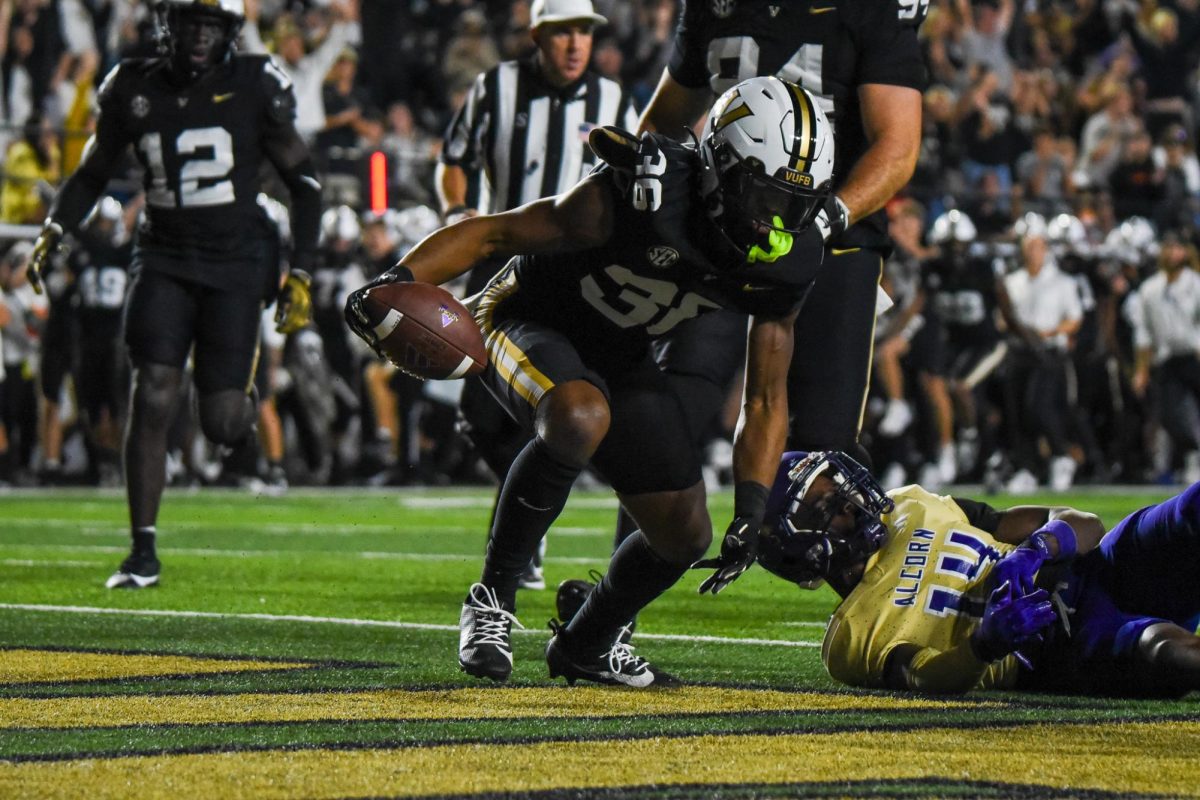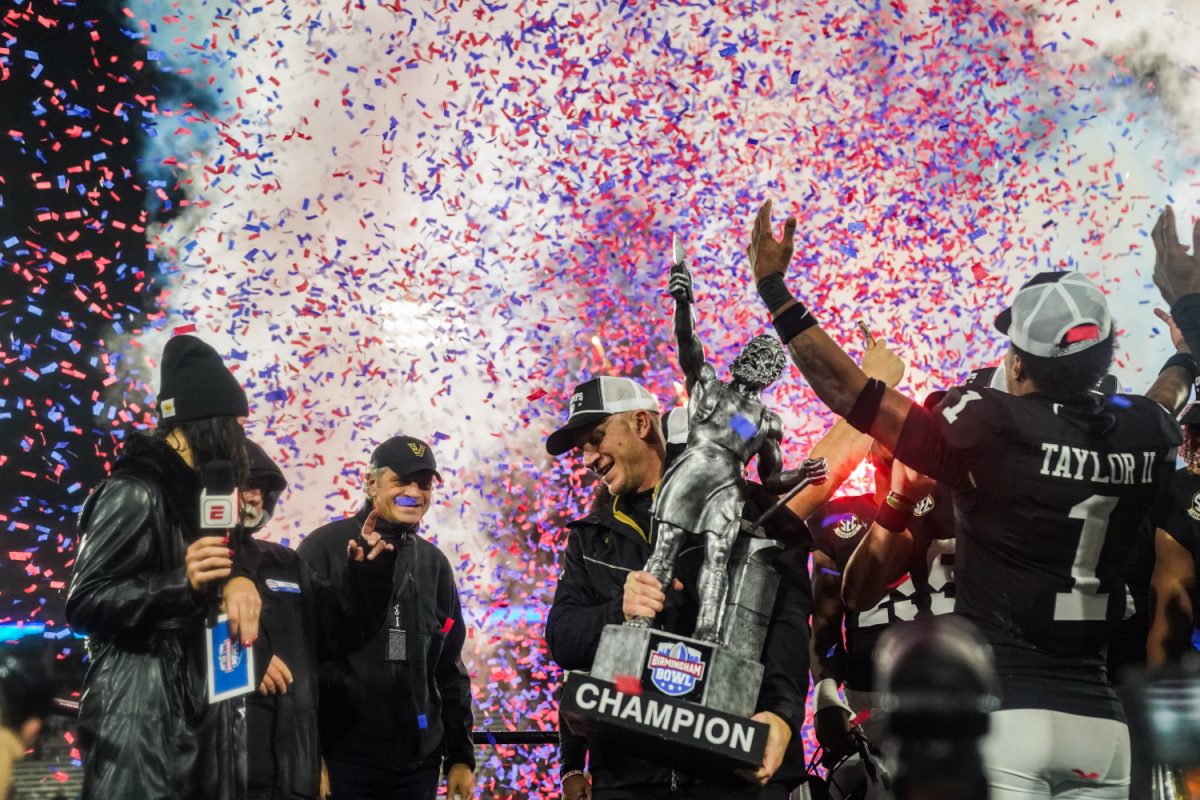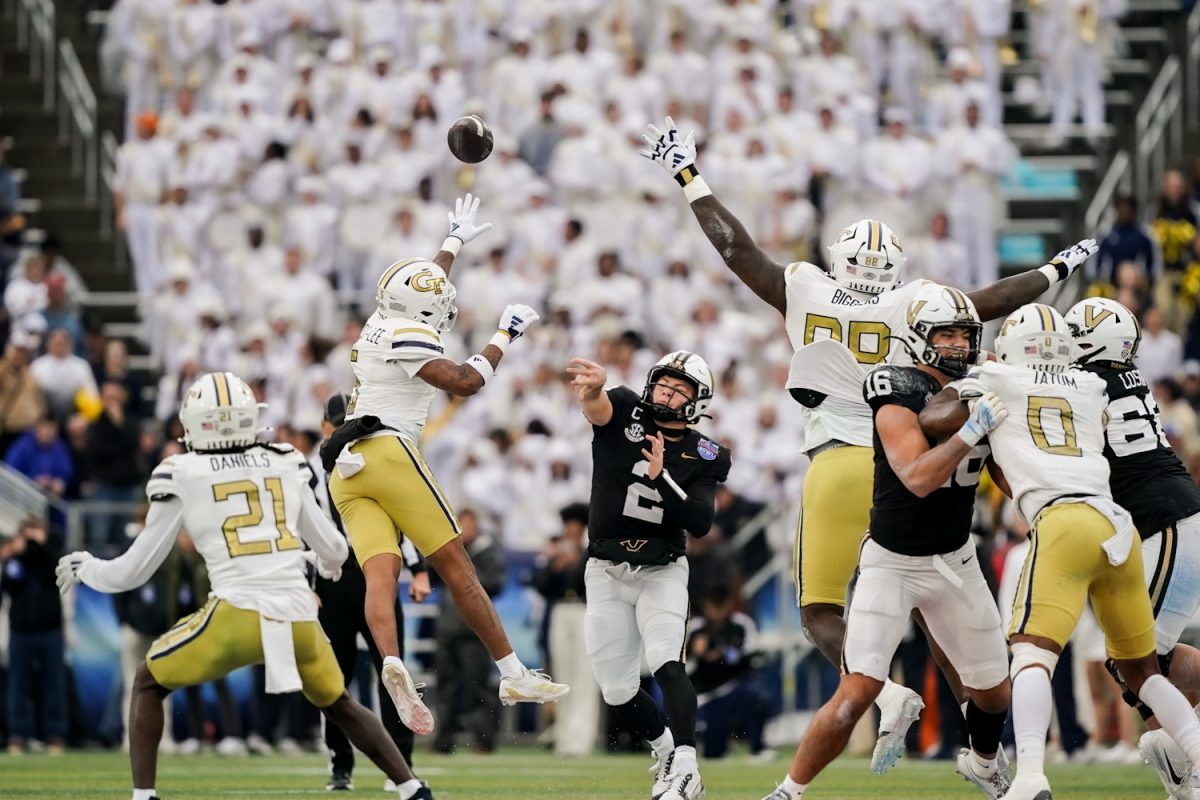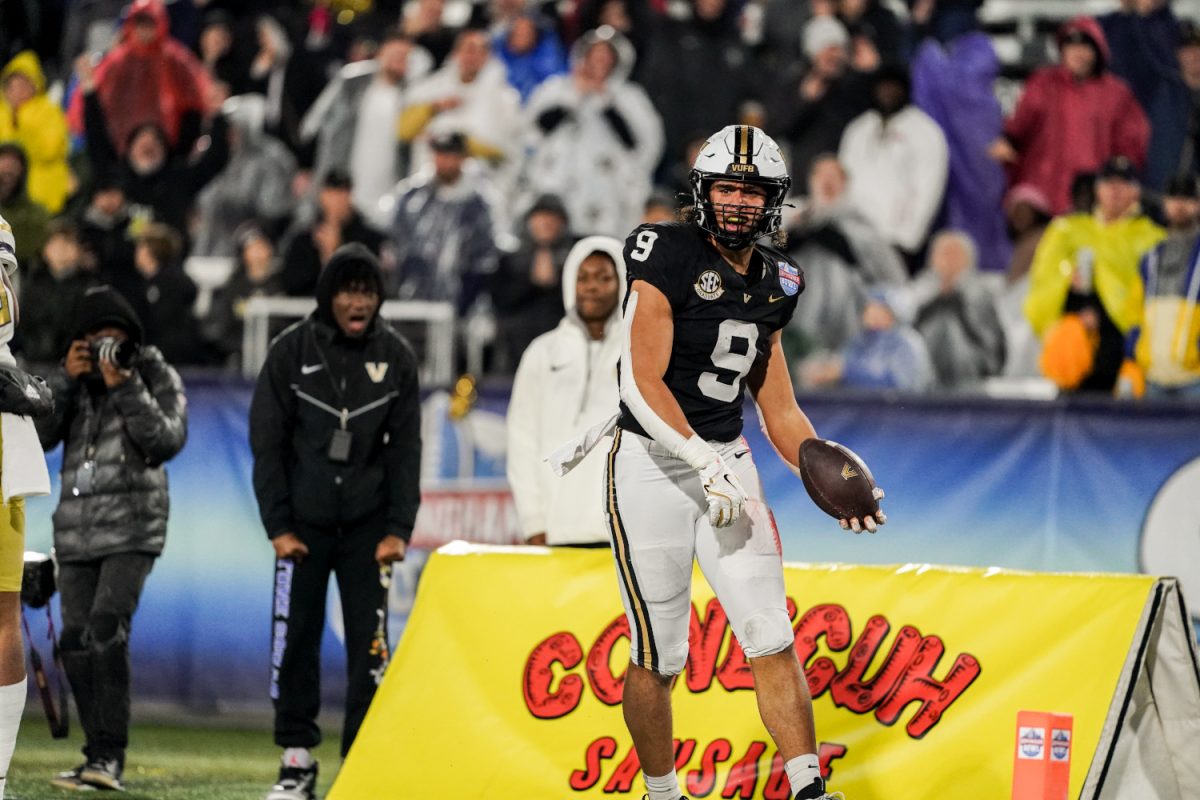Vanderbilt was a few plays away from its biggest win in years on Saturday, but it came up just short after kicker Brock Taylor missed a 31-yard field goal wide left. While this was a heartbreaking loss, the team’s grit to remain in the game against Missouri — ranked No. 7 in the country before the game — should not be overlooked. Nonetheless, the double overtime, 30-27 loss saw the Black and Gold fall to 2-2 on the season, which comes as a disappointment after a 2-0 start.
The Commodores’ lack of productivity on third down was ultimately their demise. On third and 11 in the second overtime, Diego Pavia failed to complete a pass to running back Sedrick Alexander, leading to Taylor’s missed field goal the next play. Had he completed this pass, would Alexander have gained enough yardage for the first down? Could it have made Taylor’s kick a mere chip shot? These questions, among others, left everyone wondering: What If?
Passin’ Pavia?
Pavia failed to complete a single pass on third down against the Tigers, but this drop in passing efficiency on late downs has not been a consistent pattern. Pavia threw 19 times for 132 yards on 11 completions on third-down dropbacks in the previous three games combined. Against Missouri, he was 0-for-6. Vanderbilt’s inability to convert on third downs against Missouri was the eventual cause of its late-game collapse.
Against Virginia Tech, all three of Pavia’s completions on third down led to first-down conversions. In the Alcorn State and Georgia State games, all but one of his passes resulted in a new set of downs. Needless to say, Vanderbilt failed to convert on third down through the air against Missouri.
Despite the seeming nature of these stats, Pavia was not the reason that Vanderbilt lost this game. He finished the game with 262 total yards, 178 of those coming through the air. He also threw a pair of touchdown passes, the first of which came on Vanderbilt’s second drive: a 65-yard bomb to true freshman Joseph McVay. Pavia’s next touchdown didn’t come until the first overtime period on a two-yard pass to Gabe Fisher. The lack of productivity in the middle quarters of the game echoes Vanderbilt’s ineffectiveness on second and third down.
Strong starts, weak finishes
The Commodores started the game well, amassing 166 total yards in the first quarter compared to the Tigers’ mere 77. This has been a trend all season, as head coach Clark Lea’s offense has managed to outgain all four of its opponents through the first 15 minutes of games. In its previous three games, Vanderbilt had put up more yards than its opponents through not just the opening quarter, but the entire first half. Vanderbilt has shown an ability to establish an early lead, which was crucial to its upset win over Virginia Tech.
This tendency did not continue against Missouri, as the Commodores crumbled after the first quarter. Their yardage total in the second quarter was shockingly in the negative, and they were comfortably beaten in total yards in the second half (217 to 160). This shift in momentum is well-represented by a comparison of their first-down versus third-down statistics.
As seen above, the Commodores’ first-down efficiency has been nothing to brush off. First-down plays through the first four weeks of the season accounted for 27 conversions (and subsequently plays of 10-plus yards) for Vanderbilt. On third downs against Missouri, the ‘Dores only produced two plays over 10 yards, both of which came on 3rd-and-short situations.
Inefficiency under pressure
Perhaps the most important statistic when looking at third-down effectiveness is conversion rate. In its loss to Missouri, Vanderbilt converted on just four attempts — a new season-low. Its total conversions don’t tell the full story, though: take a look at its efficiency rates through the first four weeks of the season.
In the scope of the entire season so far, Vanderbilt has by no means been underperforming on third down. In fact, a near 50% conversion rate indicated that the Commodores have been steady when it comes to converting their final opportunities. So where did this lack of output come from? Was Missouri’s defensive front too much to handle for Vanderbilt’s offensive line? Is Pavia not as poised as it may have seemed? Or is Lea the one to blame for these struggles?
There is plenty of blame to go around for this narrow loss to Missouri, but the Commodore faithful must have some pride in their team for sticking around and playing a tight game. Vanderbilt’s hopes for a bowl game may not be completely faded yet, but to get there, it will certainly need to batten down the hatches and do a better job on third downs to come.
Vanderbilt Football will get some much-needed rest during its bye this week before it faces off against No. 4 Alabama in FirstBank Stadium on Saturday, Oct. 5.

